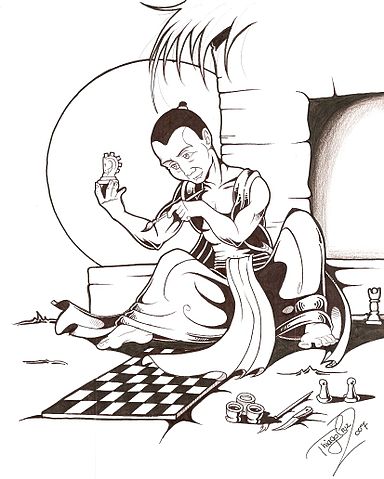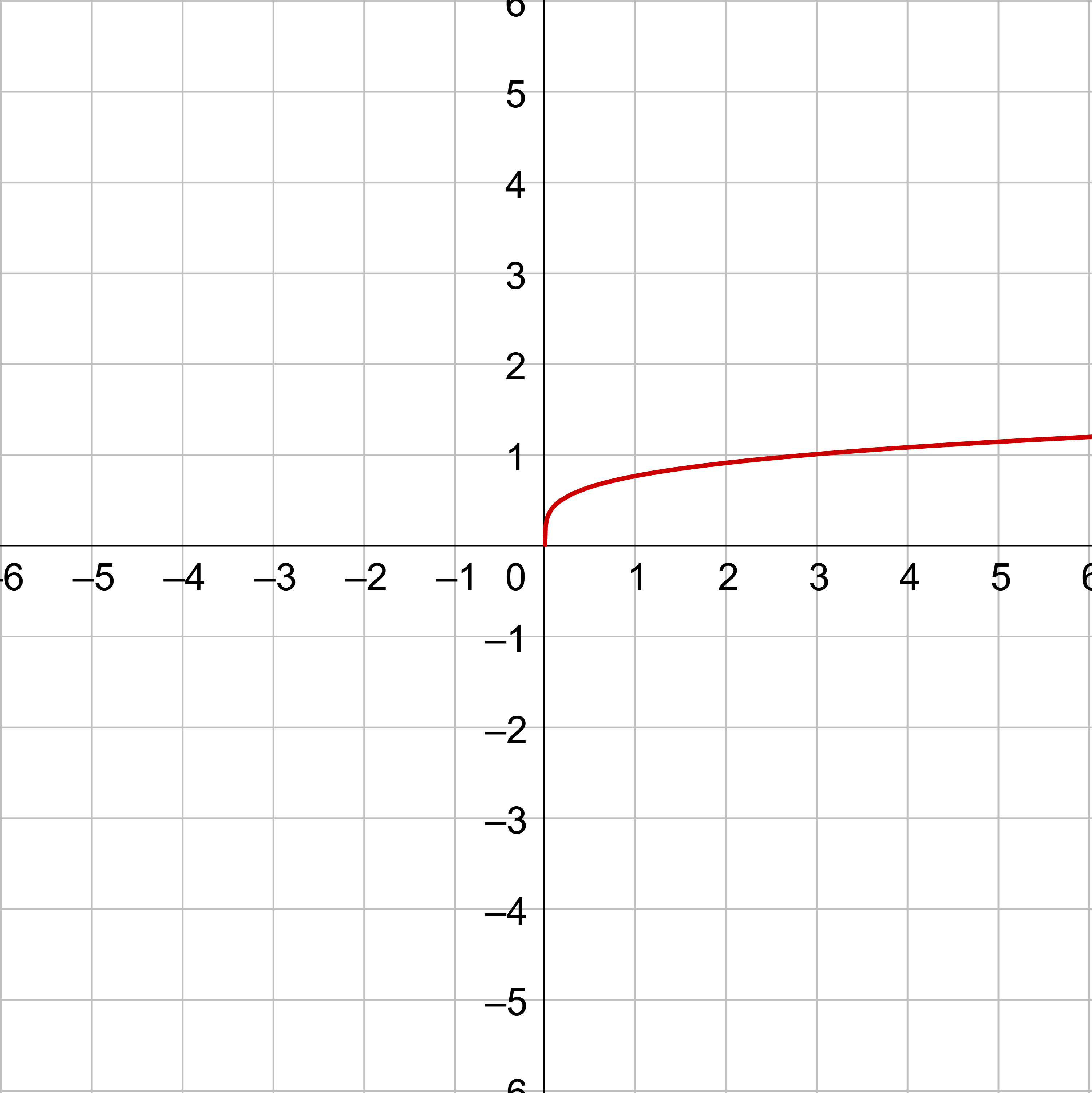Precalculus by Richard Wright
Precalculus by Richard Wright
What good will it be for someone to gain the whole world, yet forfeit their soul? Or what can anyone give in exchange for their soul? Matthew 16:26 NIV
Summary: In this section, you will:
SDA NAD Content Standards (2018): PC.7.2

The story goes like this. An ancient Indian minister named Sessa ibn Dahir invented the game of chess. His king liked the game and offered a reward. Sessa asked the king for a grain of wheat on the the first square of the board, 2 grains on the second square, 4 grains on the third square, and so on doubling the number of grains on each square. The king laughed at such a small reward. But was it a small request? Sequences and their explicit rules can be used to find out.
A sequence is a list of numbers that follows some sort of mathematical rule. If the sequence ends, then it is a finite sequence. Sequences that continue forever are called infinite.
Finite Sequence: 1, 2, 4, 8, 16
Infinite Sequence: 1, 2, 4, 8, 16, …
Sequences are part of discrete math where there are no fractional parts of the domain. Sequences are defined by mathematical rules such as an = 2n−1, where n is the domain (like x) and an is the range (like y). There are no fractional parts of n; there is 1 and 2, but no 1.5. The rule that gives the term value directly is called the explicit rule or rule for the nth term.
Write the first five terms of the sequence an = 3(−1)n − n.
Solution
Let n = 1.
a1 = 3(−1)1 − 1
a1 = −4
Continue plugging in numbers for n.
a2 = 3(−1)2 − 2 = 1
a3 = 3(−1)3 − 3 = −6
a4 = 3(−1)4 − 4 = −1
a5 = 3(−1)5 − 5 = −8
The sequence is −4, 1, −6, −1, −8, …
Find the first five terms of an = 3n + 1.
Answer
4, 7, 10, 13, 16
Given the first few terms of a sequence, find an explicit formula for the sequence using the following suggestions. These are not step-by-step instructions.
Find the rule for the nth term of 3, 5, 7, 9, 11, …
Solution
There is a pattern of adding 2.
| 3, | 5, | 7, | 9, | 11, … |
| 3, | 3 + 2, | 3 + 2 + 2, | 3 + 2 + 2 + 2, | 3 + 2 + 2 + 2 + 2, … |
| 3 + 2·0, | 3 + 2·1, | 3 + 2·2, | 3 + 2·3, | 3 + 2·4, … |
These expressions are the an. Compare them to the n's to find the rule.
| n | 1 | 2 | 3 | 4 | 5 |
|---|---|---|---|---|---|
| an | 3 + 2·0, | 3 + 2·1, | 3 + 2·2, | 3 + 2·3, | 3 + 2·4, … |
Notice the multiples of 2 are 1 less than n. So, the rule for the nth term is
an = 3 + 2·(n − 1)
Distribute and simplify to get
an = 2n + 1
Find the rule for the nth term of 3, −6, 12, −24, 48, …
Solution
There is a pattern of multiplying by 2.
| 3, | −6, | 12, | −24, | 48, … |
| 3, | −3·2, | 3·2·2, | −3·2·2·2, | 3·2·2·2·2, … |
| 3·20, | −3·21, | 3·22, | −3·23, | 3·24, … |
These expressions are the an. Compare them to the n's to find the rule.
| n | 1 | 2 | 3 | 4 | 5 |
|---|---|---|---|---|---|
| an | 3·20 | −3·21 | 3·22 | −3·23 | 3·24 |
Notice the exponents are 1 less than n. There is also a pattern of alternating signs with a1 being positive so use (−1)n−1. So, the rule for the nth term is
an = 3·2n-1·(−1)n−1
Find the rule for the nth term of \(\frac{1}{2}, \frac{2}{3}, \frac{3}{4}, \frac{4}{5}, \frac{5}{6}, …\)
Solution
When the terms are fractions, then treat the numerator and denominator separately. This pattern is adding 1 in the numerator and adding 1 in the denominator. However, these numbers are very close to n, so start by comparing the the an to the n.
| n | 1 | 2 | 3 | 4 | 5 |
|---|---|---|---|---|---|
| an | \(\frac{1}{2}\) | \(\frac{2}{3}\) | \(\frac{3}{4}\) | \(\frac{4}{5}\) | \(\frac{5}{6}\) |
Notice the numerators are equal to n. The denominators are 1 more than n. So, the rule for the nth term is
$$ a_n = \frac{n}{n+1} $$
Find the rule for the nth term of 0, 3, 8, 15, 24, …
Solution
There is no constant pattern or adding or multiplying to get the next number. Start by comparing the the an to the n.
| n | 1 | 2 | 3 | 4 | 5 |
|---|---|---|---|---|---|
| an | 0 | 3 | 8 | 15 | 24 |
Notice that the terms are close to perfect squares.
| n | 1 | 2 | 3 | 4 | 5 |
|---|---|---|---|---|---|
| an | 0 | 3 | 8 | 15 | 24 |
| an + 1 | 0 + 1 = 1 | 3 + 1 = 4 | 8 + 1 = 9 | 15 + 1 = 16 | 24 + 1 = 25 |
Notice the an + 1 = n2. So, the rule for the nth term is
an = n2 − 1
Find the rule for the nth term.
Answers
a. 4n − 1, b. \(\frac{2n}{2^{n-1}}\), c. n3
Explicit rules give the term, an, directly by simply plugging in the n. Recursive rules give the next term based on the previous term. Recursive rules are often easier to write, but they can be a nuisance to use. To find the 10th term, you have to find the 9th term. To get the 9th term, you have to find the 8th term. So, to find the 10th term, you must find all the terms starting from the 1st term.
For a recursive rule, an refers to the current term. an − 1 refers to the previous term.
Write the first five terms of a1 = 4, an = 2an−1 − 1.
Solution
a1 is already given, so start by plugging in n = 2.
a1 = 4
an = 2an−1 − 1
a2 = 2a2−1 − 1
a2 = 2a1 − 1
a1 is 4.
a2 = 2(4) − 1 = 7
Plug in n = 3.
a3 = 2a3−1 − 1
a3 = 2a2 − 1
a3 = 2(7) − 1 = 13
Plug in n = 4.
a4 = 2a4−1 − 1
a4 = 2a3 − 1
a4 = 2(13) − 1 = 25
You can continue plugging in numbers, or the pattern can be used. The pattern for this sequence is 2 times the previous term − 1.
a5 = 2(25) − 1 = 49
The sequence is 4, 7, 13, 25, 49.
an refers to the current term. an − 1 refers to the previous term.
Write a recursive rule for 3, 5, 7, 9, 11, …
Solution
The pattern is adding 2.
an = an−1 + 2
Don't forget the first term.
an = 3, an = an−1 + 2
Write a recursive rule for 2, 6, 18, 54, 162, …
Answer
a1 = 2, an = 3an−1
An important concept that appears in discrete math and probability is the factorial whose symbol is !. A factorial is a number multiplied by every natural number less than it. For example,
5! = 5 · 4 · 3 · 2 · 1 = 120
And by definition 0! = 1, which is important for probability.
To find a factorial, multiply that number by every natural number less than it.
6! = 6 · 5 · 4 · 3 · 2 · 1 = 720
By definition 0! = 1
To simplify a factorial expression, write out enough terms to see a pattern, then simplify the pattern.
Simplify \(\frac{10!n!}{2!8!(n+1)!}\).
Solution
Begin by writing out each factorial.
$$ \frac{\color{blue}{10!}\color{red}{n!}}{\color{purple}{2!}\color{green}{8!}\color{indigo}{(n+1)!}} $$
$$ \frac{\color{blue}{10·9·8·7·6·5·4·3·2·1}·\color{red}{n(n-1)(n-2)\cdots}}{\color{purple}{2·1}·\color{green}{8·7·6·5·4·3·2·1}·\color{indigo}{(n+1)n(n-1)(n-2)\cdots}} $$
Cancel numbers.
$$ \require{cancel} \frac{10·9·\cancel{8·7·6·5·4·3·2·1}·\cancel{n(n-1)(n-2)\cdots}}{2·1·\cancel{8·7·6·5·4·3·2·1}·(n+1)\cancel{n(n-1)(n-2)\cdots}} $$
$$ \frac{90}{2(n+1)} $$
$$ \frac{45}{n+1} $$
Simplify \(\frac{2!3!}{4!}\)
Answer
\(\frac{1}{2}\)
Given the first few terms of a sequence, find an explicit formula for the sequence using the following suggestions. These are not step-by-step instructions.
an refers to the current term. an − 1 refers to the previous term.
To find a factorial, multiply that number by every natural number less than it.
6! = 6 · 5 · 4 · 3 · 2 · 1 = 720
By definition 0! = 1
To simplify a factorial expression, write out enough terms to see a pattern, then simplify the pattern.
Helpful videos about this lesson.
